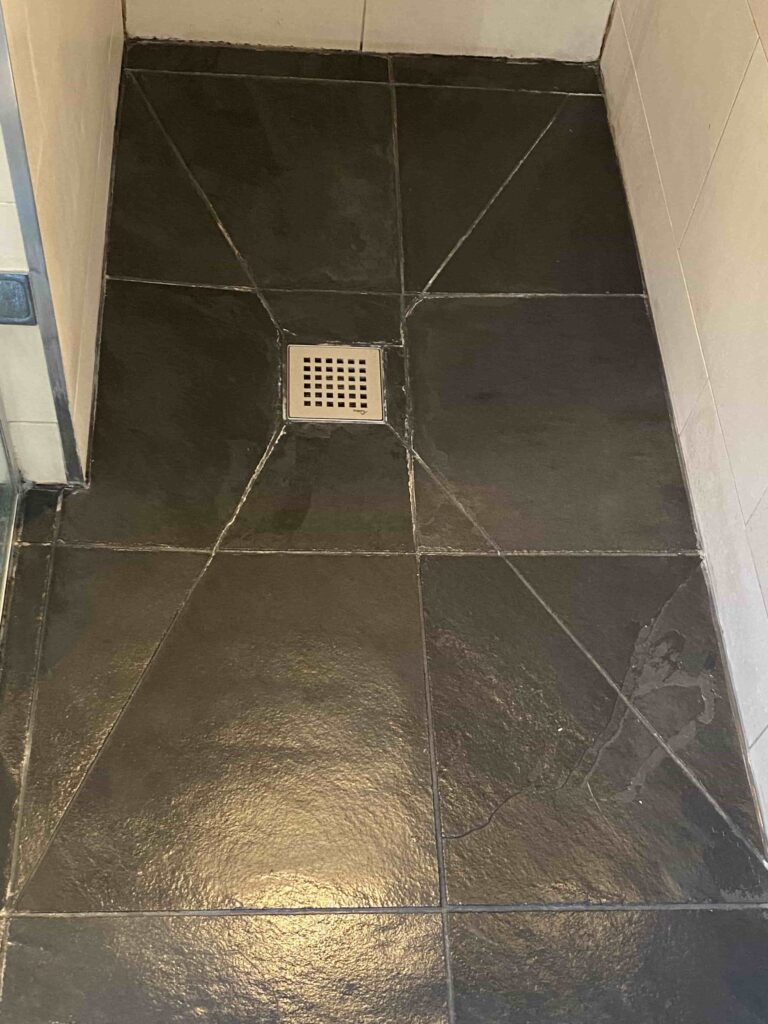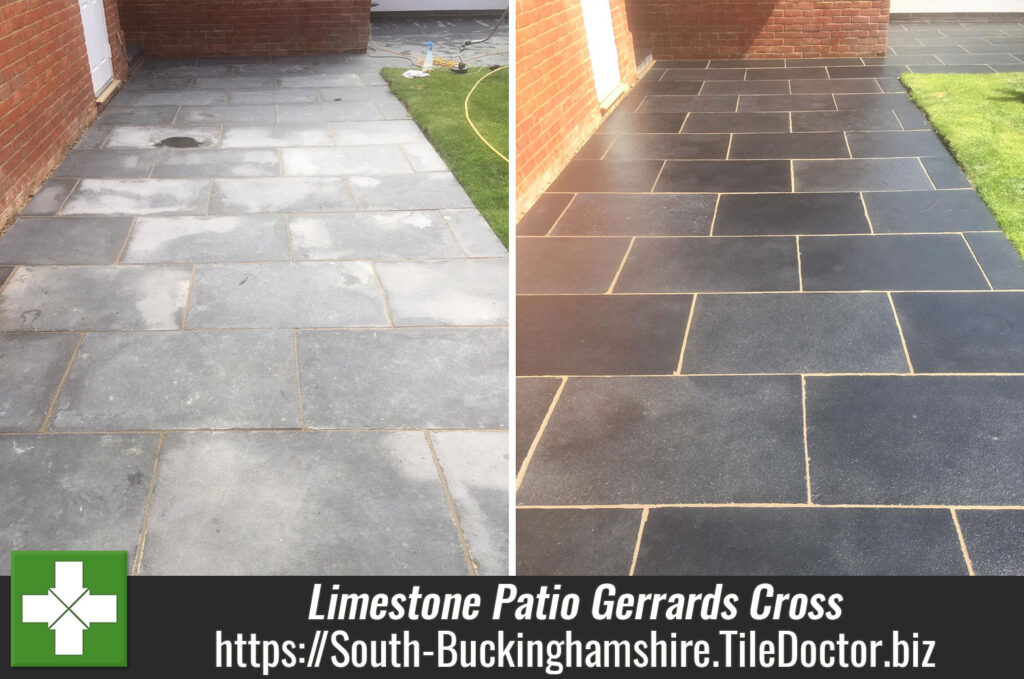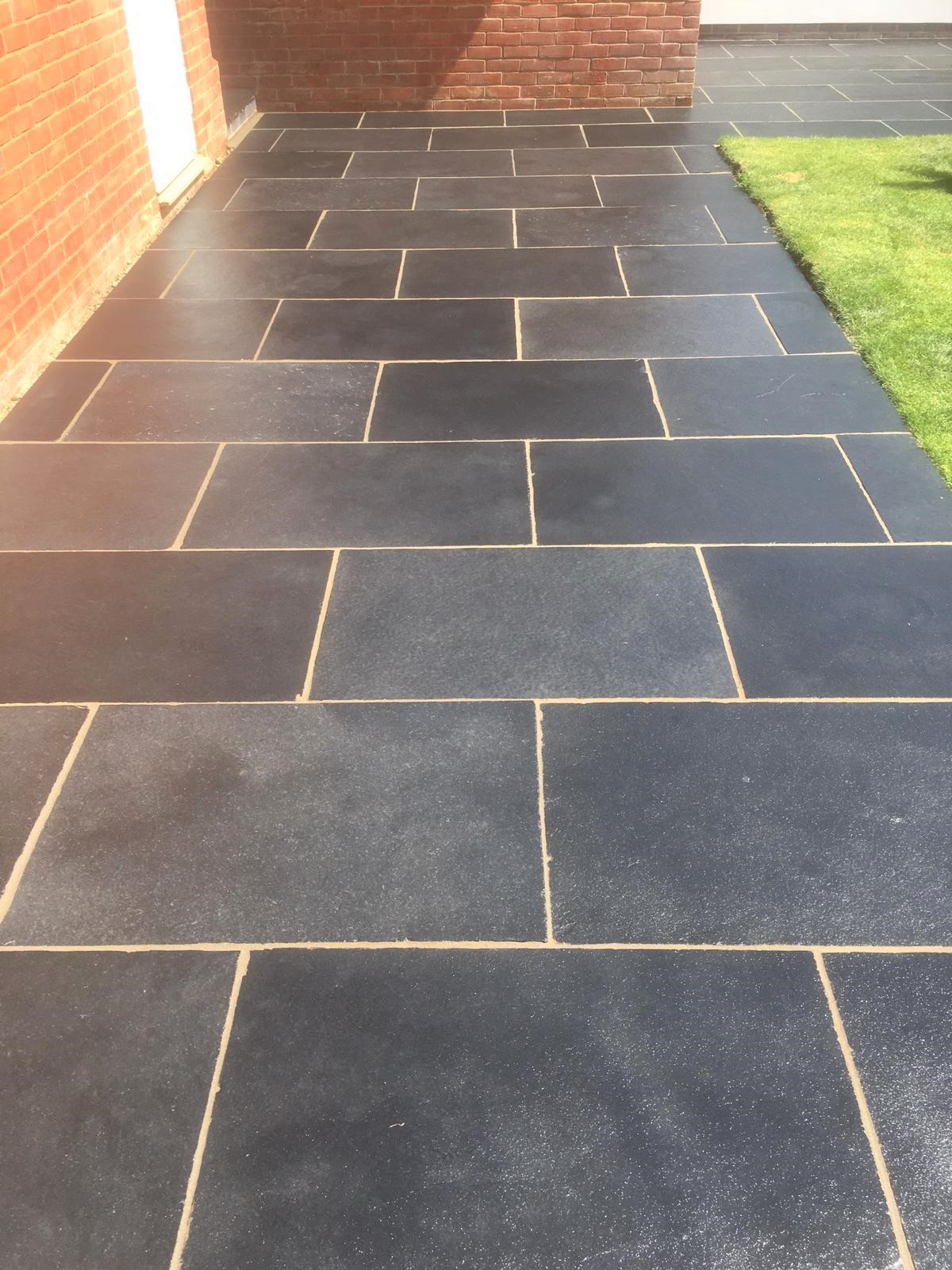Removing Limescale from Slate Wet Room Tiles in Penn
This is a great example of what we can achieve with very stained Slate Tiles so well worth sharing. The customer was from Penn in Buckinghamshire and as you can see from the photo below the Slate tiled floor in their wet room was heavily stained with thick limescale mainly around the shower trap where the water collects.

Buckinghamshire is known for its hard water problems which basically means the water contains high levels of calcium carbonate. These deposits are carried in the water and left on the tiles after each shower resulting in Limescale. You can reduce the problem by installing a water softener and it can be dissolved using some of the strong products you find in supermarkets however these are acidic and can etch natural stone if you are not careful. Always read the label!
In this case my customer had just moved into the house and wanted to improve the look of the bathroom and then eventually they planned to change the whole bathroom itself, but in the meantime wanted it cleaned and restored.
Cleaning a Slate Tiled Shower Floor
To renovate the Slate tiles, I started with the application of a strong dilution of an alkaline product made by Tile Doctor called Pro-Clean. This is a great grout cleaner and when used as a strong dilution it will also strip off any sealer remaining on the Slate.
I used the usual method of spraying the Pro-Clean onto the tile and grout and leaving it to soak in for at least ten minutes so it can get to work. It was then scrubbed in with hand tools and an 80-grit silicon carbide brush which is a very effective combination. This gave the stone a deep clean and removed some of the thick limescale on the tiles which was rinsed off with water.
Once the floor had been cleaned and stripped back, I used another Tile Doctor product called Grout Clean-up which is an acidic cleaner and is applied in the same way. Because the build-up of Limescale was so thing I found that a lot of pressure was needed when scrubbing the tiles and, in some areas, I needed to use a scrapper to take off the top layer.
Sealing a Slate Tiled Shower Floor
After cleaning off all the limescale and giving the stone a good rinse, I dried the floor using a white rag and left it to dry off so it would dry enough for sealing. After giving the floor time to dry I used tile doctors oil-based sealer called X-Tra seal putting down a thick coat and allowing the tiles to soak up the sealer. After some time, the floor was then buffed with a cloth to remove the excess and then a second coat was applied.

X-Tra Seal adds the oil back into the stone which restores the dark tones and bring out the natural colour in the Slate, its also rated for external use so will cope well with the damp conditions of the wet room. After that coat had dried a 6-inch 1500-grit buffing pad was used to remove excess sealer and add a slight sheen to the floor.
The fresh sealer should make the Slate less prone to limescale deposits however its not going to prevent the problem indefinitely. Also, for the aftercare of sealed shower tiles, I recommend Aqua-Pro which is a mild cleaning product designed for regular use and won’t harm the sealer like many of the stronger products you find in supermarkets.
Professional Restoration of a Slate Tiled Shower in South Buckinghamshire
Removing Limescale from Slate Wet Room Tiles in Penn Read More »






